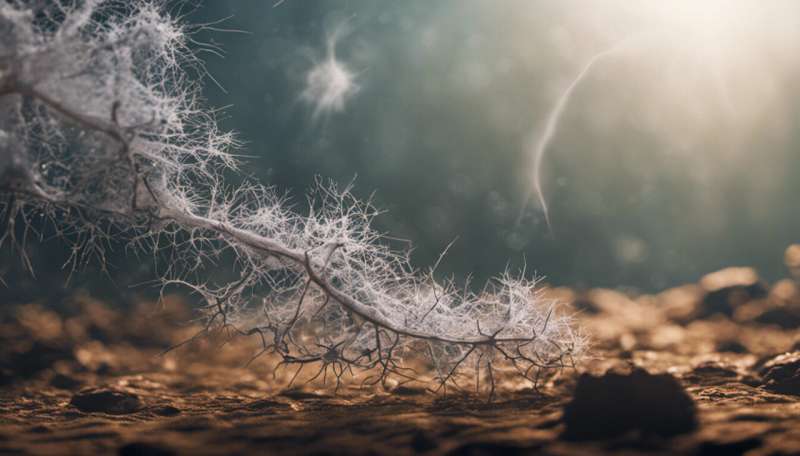This article has been reviewed according to Science X's editorial process and policies. Editors have highlighted the following attributes while ensuring the content's credibility:
fact-checked
trusted source
proofread
Interspecies research identifies important neurons for visual perception

To make sense of a visual scene, it's important to be able to pick out any figures or objects from the background. In a study published recently in Frontiers in Systems Neuroscience, researchers from Japan have expanded on previous results in macaque monkeys indicating that specific neurons respond to scenes that include both figures and backgrounds. Crucially, they found that the responses of these macaque neurons were related to how easy or hard it was for human subjects to pick out the figures from the backgrounds.
The previous study used electrophysiology (an invasive method that can accurately measure the activity of single neurons in the brain) in macaques and found that some neurons in the V4 region—an area of the brain mainly involved in object recognition—responded specifically to pictures of figures on backgrounds, as opposed to other types of images. Notably, each neuron responded strongly to some pictures but not others. The researchers led by the University of Tsukuba decided to follow up on this finding.
"We wanted to further investigate how these neurons work, and how these neurons signal the perception of figure," says senior author of the study, Professor Ko Sakai. "To do this, we looked at the relationship between the macaque data from the previous study and the ease of figure and background perception in humans."
To do this, the researchers first used the same set of pictures from the macaque study in an experiment using humans, to identify the figures that were easier to perceive from the background and those that were harder. They then analyzed the data from the macaque study in relation to their experimental results to see if macaque neurons responded differently to these easier- and harder-to-perceive figures. Indeed, easier-to-perceive figures tended to evoke larger, faster, and more consistent responses in both single neurons and the neuronal population in macaque brains.
"We were surprised to find that neuronal responses in the macaque brain were indeed correlated to figure and background perception in humans," says Professor Sakai. "This finding indicates that these neurons contribute to the brain's separation of figures from the background, at least in primates."
These results provide hope for people with related perceptual difficulties (such as those caused by traumatic brain injury or stroke). By understanding the neuronal basis of figure and background perception in humans, treatment options will improve, as will our knowledge of how visual perception works as a whole.
More information: Motofumi Shishikura et al, Correlation between neural responses and human perception in figure-ground segregation, Frontiers in Systems Neuroscience (2023). DOI: 10.3389/fnsys.2022.999575



















